
Mottisfont is a historical priory, garden and country estate in Hampshire, managed by the National Trust. The Russell family arrived at Mottisfont in the 1930s, Maud Russell transformed the house to create the luxurious, neo-classical feel that's still on show today. As their weekend retreat, it became the centre of a fashionable, artistic circle. In 1939, she commissioned Rex Whistler to transform the original entrance hall into a large saloon. The results were his spectacular trompe l'œil murals, painted in a gothic style, light-heartedly reflecting the building’s origins as a medieval priory. It was these murals that I had come to see.
It was the middle of May, and with my usual companion in tow, we arrived at Mottisfont. We were handed a map and sent off into the grounds with the announcement that we should see trout in the River Test as we crossed the bridge. We were dubious of this but as we crossed the red brick bridge there they were. The water was crystal clear, willows draped across the banks and emerald green plants rippled under the water. As we rounded the corner the house came into view and the lawn stretched out in front of us.
As we walked along the path to the house we passed the font, the house's namesake. The map informed us that it had been an endless spring of pure water for more than a thousand years. Beyond the font was the Winter Garden but we did not linger here for long as the house was calling.
Through a door on the west side of the house, we found ourselves in the entrance hall, following along the corridor we first came to the Boys' Room. The bookcase that lined a wall was painted to look like marble, upon it were not only books but old cameras, photographs and magazines about aeroplanes. A harpsichord rested in one corner of the room and worn black leather armchairs faced the fireplace.
The next room was the Study, wood paneling was painted in a seafoam green and trimmed in white. Grand bookcases rested amongst the paneling, the mantelpiece was inlaid with a black stone that was laced with white swirls.
At the end of the corridor we took a right into the Long Gallery. The walls were painted to look like great slabs of golden marble and heavy crimson damask curtains framed the windows. The door at the beginning of the corridor led to the room we had come to Mottisfont to see, the Whistler Room.
This extraordinary room was Rex's last and finest piece before he was killed on active service in France. The room was under conservation when I visited, the ermine lined curtains had been taken down and temporary blinds had been put up which made the room too dark to be seen in its full glory. Never the less it was still a pleasure to walk round and see the details up close, the individual brush strokes on the books where Rex cleverly put his name and the dates of beginning and completion, the pink rose peaking out from behind the ermine cape and the black glove tossed onto the pedestal amongst the rose's fallen petals. The whole room glowed in a soft pink under these new lighting conditions and one could easily imagine what the evenings might have been like for the Russel family. A checkers board that the family had bought from Fortnum and Mason's and once took on picnics sat on a table in front of the fireplace in the middle of a game waiting for its players to return.
Rex was painting the mock ermine lining when the Second World War broke out. High up on the wall, out of sight, the artist painted this message: "I was painting this Ermine curtain when Britain declared war on the Nazi tyrants. Sunday September 3rd 1939. R.W." This he had painted again on a small piece of card which was now framed and sitting on top of a piano in the room. Next to the piano was his first sketch of the burning urn and one could look at the drawings details, stand back, and compare it to the finished mural, how the rose was moved and a gold ring was added next to the glove.
There were other small details that could not be observed simply from pictures, the pediments on the windows were entirely made of canvas and it was not until one stood underneath them that they revealed themselves to be paper thin. Another pleasant discovery was that the door handles were made by Rex's brother, Lawrence Whistler. Lawrence had etched them in the theme of the gothic room but with the little additions of artist motifs inspired by the two artists skills, paint brushes and palette for Rex, and etching tools to represent his own work.
We continued down the Long Gallery. "Mrs Marianne Vaudrey-Barker-Mill had lived at Mottisfont before the Russells. Described as the 'hero of the Gothic', Mrs Vaudrey-Barker-Mill had a great appreciation of the monastic history of the house. She carried out many renovations, including the painting of the Long gallery. This was decorated to look like Siena marble, created by delicately painting the walls with feathers." Maud and Gilbert Russell built on Mrs Vaudrey-Barker-Mill's decor when they moved into Mottisfont.
The next room was the White Bedroom, the room was a mix of white and gold, next to the fireplace was a reveal cut out of the wood paneling that showed the remains of the old priory.
The following room was the Red Room, which was covered in paisley wallpaper and nearly empty but for a sofa, an armchair and a few easels that held posters describing some of the history of the house.
We were now once again in the Long Gallery but at this end stood a statue of Dionysus waiting near the hallway that led to Dining Room.
The Dining room was painted to imitate marble much like the Long Gallery but in this room is was pink trimmed with green. "Maud loved to entertain guests here, regaling them with stories of the history of the house. She welcomed notable figures of the day ranging from artist and writer to politicians. The long list of guests include writer Ian Fleming, artists Boris Anrep and Derek Hill, and garden designers Norah Lindsey and Geoffrey Jellicoe."
Opposite was the Morning Room, painted in a pale gray and trimmed with gold, the room looked out onto the south lawn. What caught my attention in this room was the fireplace as the middle motifs was a vase overflowing with a strawberry plant.
Walking out onto the terrace and looking to the right there is the box parterre that was designed by Norah Lindsey, reminiscent of a medieval knot garden. "If it is a dry summer, you can look out over the south lawn and the parterre and see the ghostly outline of the remains of the priory, which are now buried underground."
Down the steps of the terrace and we were on the edge of the south lawn. From here we made our way past the stables and up to the famous rose garden. We were just on the edge of rose season so the garden was not at its peak which worked in our favour as the crowds had yet to descend. Through a door in a hedge and we were in the kitchen gardens, a fountain at its centre trickled as we waited in line for ice cream, strawberries and cream seemed the most fitting.
Through a door in a wall and we were in the rose garden. The map informed us that in the 1970's, Graham Stuart Thomas saved rare and beautiful blooms from extinction and created this glorious garden. Some roses had made an appearance, old moss roses and ramblers that climbed the walls, but what was on full display were the bearded irises. I had yet to have the opportunity to see bearded irises in person and here, grouped in clumps throughout the borders, they truly were a romantic sight.
In many of the photographs I had seen of Mottisfont's rose garden there were a series of rose arbours and at the end was a beautiful white bench. We found the bench and were delighted to see that the pink rose behind it was already flowering, it had a scent of spice rather than the scent of Turkish delight. We rested here for some time taking in the view, and then continuing on through the garden, admiring the moss roses and the irises.
There was one more section of walled garden to see, it was a triangle of red brick walls and also dedicated to roses. Here the beds were edged with lavender and alliums popped out between the rose bushes. At the point of the triangle was a gate that led out into a meadow walk and beside it was an armillary sphere that reminded me of the one at Laskett Gardens.
We retraced our steps back through the gardens with the intention of taking a walk along the river. The Rose Bridge was closed but we followed the path of the river underneath a canopy of London planes and willows. Basked in the sun the leaves of the willows shimmered in the breeze.
Reading Recommendations & Content Considerations
by Garden, House and Estate
Hugh and Mirabel Cecil The National Trust






















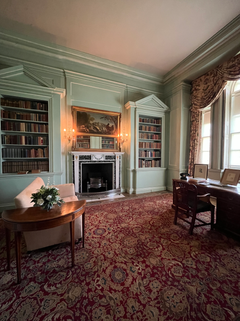



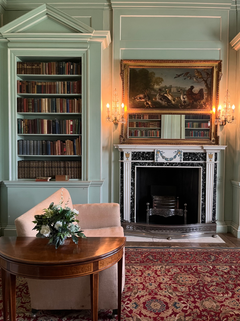























































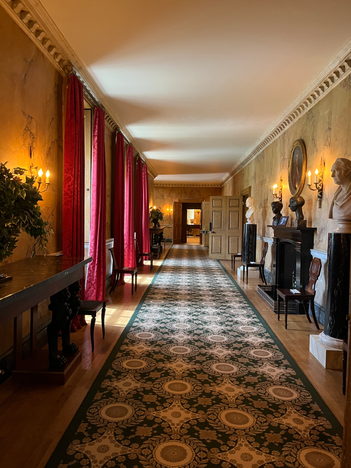

























































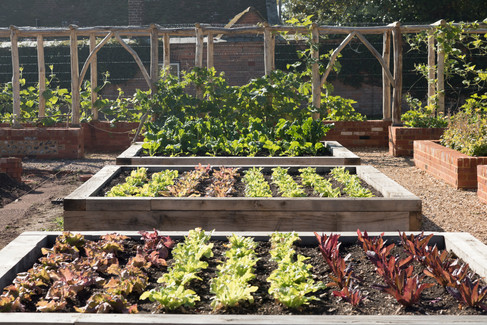






















































































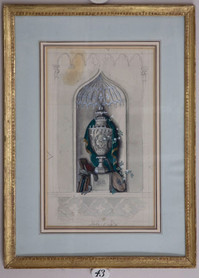

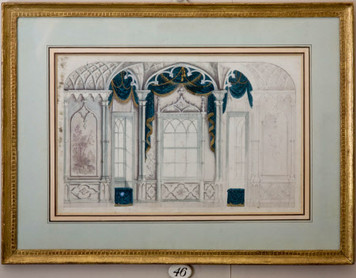














































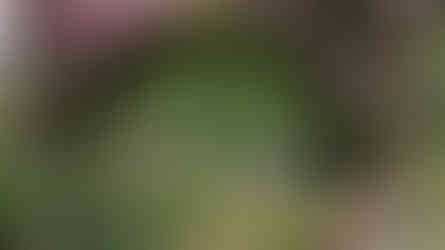


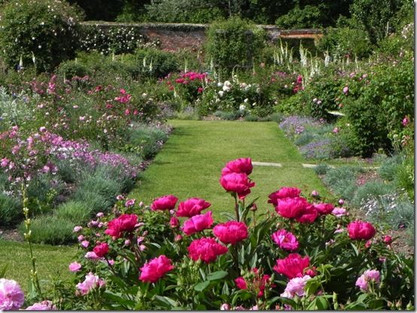






























Commentaires